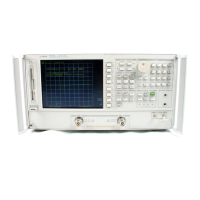Source Theory Overview
The source produces a highly stable and accurate RF output signal by phase
locking a YIG oscillator to a harmonic of the synthesized
VCO
(voltage controlled
oscillator). The source output produces a CW or swept signal between 300
kHz
and 3
GHz
(or 300
kHz
and 6
GHz
for Option 006) with a maximum leveled
power of + 10
dBm.
The source’s built-in 70
dR
step attenuator allows the
power to go as low as -85
deem.
The full frequency range of the source is produced in 14 subsweeps, one in
super low band, two in low band, and eleven in high band. The high band
frequencies (16 MHz to 3
GHz)
or (16 MHz to 6
GHz
for Option 006) are achieved
by harmonic mixing, with a different harmonic number for each subsweep. The
low band frequencies (300
kHz
to 16 MHz) are down-converted by fundamental
mixing. The super low band frequencies (10
kHz
to 300
kHz)
are sent directly
from the Al2 reference board to the output of the A3 source assembly. This
band is not phased locked nor does it use the ALC. It is the basic amplified
output of the fractional-N synthesizer.
The source functional group consists of the individual assemblies described
below.
A14/A13
Fractional-N
These two assemblies comprise the synthesizer. The 30 to 60 MHz VCO in
the Al4 assembly generates the stable LO frequencies for fundamental and
harmonic mixing.
Al2 Reference
This assembly provides stable reference frequencies to the rest of the
instrument by dividing down the output of a 40 MHz crystal oscillator. In low
band operation, the output of the fractional-N synthesizer is mixed down in the
Al2 reference assembly. (The 2nd
LO
signal from the Al2 assembly is explained
in Receiver Theory.) The Al2 is
also
the origin of the super low band portion of
the 87533 source.
12-14 Theory of Operation

